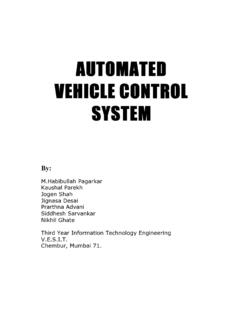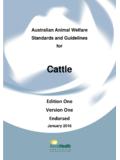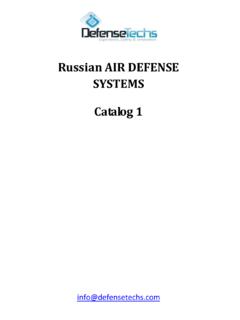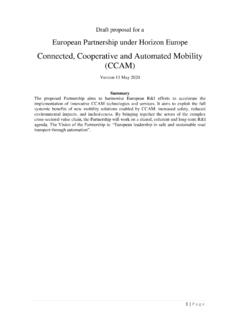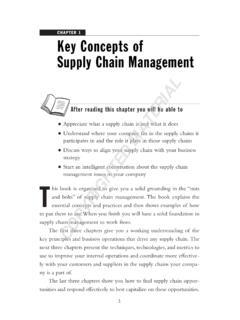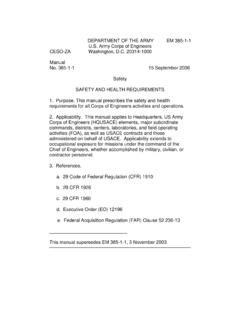Transcription of Urban Public Transportation Systems - EOLSS
1 UNESCO EOLSSSAMPLE CHAPTERSTRANSPORTATION ENGINEERING AND PLANNING Vol. I - Urban Public Transportation Systems Vukan R. Vuchic Encyclopedia of Life Support Systems ( EOLSS ) Urban Public Transportation Systems Vukan R. Vuchic Professor, Department of Systems Engineering, University of Pennsylvania, Philadelphia, PA, USA Keywords: Urban transit, Urban Transportation , Public transport, Rapid Transit, Semirapid Transit, bus transit, light rail transit, metro Systems , commuter rail, regional rail, Automated guided Transit, transit Systems scheduling, transit planning Contents 1.
2 Classification of Transit Systems 2. Bus Transit system 3. Trolleybus system 4. Rail Transit Systems 5. Tramway/Streetcar and Light Rail Transit - LRT 6. Rapid Transit or Metro 7. Automated guided Transit Systems 8. Regional and Commuter Rail 9. Special Technology Transit Systems 10. Transit Line Scheduling 11. Transit Planning and Selection of Transit Modes 12. Present and Future Role of Urban Transit Glossary Bibliography Biographical Sketch Summary Cities and metropolitan areas are centers of diverse activities, which require efficient and convenient Transportation of persons and goods.
3 It is often said that Transportation is the lifeblood of cities. High density of activities makes it possible and necessary that high capacity modes, such as bus, light rail and metro, be used because they are more economical, more energy efficient and require much less space than private cars. Moreover, Public modes of Transportation provide service for all persons, while cars can only be used by those who own and can drive them. Thus, cities need and benefit from Public Transportation services, which offer greater mobility for the entire population than people in rural areas can enjoy.
4 Transit Systems are also needed in urbanized areas to make high-density of diverse activities, such as residences, business offices, factories, stadia, etc., physically possible, while keeping cities livable and attractive for people. Urban Transportation is classified into private, for-hire and Public Transportation or mass transit. This chapter covers Public Transportation Systems . Transit modes are defined by their right-of-way (ROW) category, technology and types of operations.
5 Three ROW categories are: UNESCO EOLSSSAMPLE CHAPTERSTRANSPORTATION ENGINEERING AND PLANNING Vol. I - Urban Public Transportation Systems Vukan R. Vuchic Encyclopedia of Life Support Systems ( EOLSS ) C - Urban streets with mixed traffic: Street transit modes include mostly buses, but also trolleybuses and tramways/streetcars. B - partially separated tracks/lanes, usually in street medians. Semirapid Transit, using mostly ROW B, requires higher investment and has a higher performance than street transit.
6 It includes Light Rail Transit - LRT, as well as semirapid bus. A - paths used exclusively by transit vehicles comprise rapid transit mode or metro system . Its electric rail vehicles are operated in trains and provide the highest performance mode of Urban Transportation . Buses are the most common transit mode. They operate on streets and have an extensive network of lines. In some cities they have been upgraded by provision of exclusive bus lanes and provision of bus preferential signals. LRT represents the most common mode of semirapid transit.
7 Its articulated electric vehicles operated in short trains on largely separated tracks provide more attractive and permanent services than buses at a much lower investment cost than metro Systems require. LRT is presently being developed in many cities around the world that want to make transit services more efficient and largely independent of traffic congestion. Metro Systems have by far the highest performance - capacity, speed, reliability - of all transit modes. They require very high investment, but in the long run they are essential for efficient functioning and quality of life in large cities.
8 Rail transit modes have a strong ability to influence Urban form and contribute to a city s livability. Other modes, such as Regional Rail and Automated guided Transit, are mentioned. Brief descriptions of transit line scheduling procedure and the general approach to transit planning are also presented. 1. Classification of Transit Systems Urban Transportation consists of a family of modes, which range from walking and bicycles to Urban freeways, metro and regional rail Systems .
9 The basic classification of these modes, based on the type of their operation and use, is into three categories: (a) Private Transportation consists of privately owned vehicles operated by owners for their personal use, usually on Public streets. Most common modes are pedestrian, bicycle and private car. (b) Paratransit or for-hire Transportation is Transportation provided by operators and available to parties which hire them for individual or multiple trips. Taxi, dial-a-bus and jitney are the most common modes.
10 (c) Urban transit, mass transit or Public Transportation includes Systems that are available for use by all persons who pay the established fare. These modes, which operate on fixed routes and with fixed schedules, include bus, light rail transit, metro, regional rail and several other Systems . Urban Public Transportation , strictly defined, includes both transit and paratransit UNESCO EOLSSSAMPLE CHAPTERSTRANSPORTATION ENGINEERING AND PLANNING Vol. I - Urban Public Transportation Systems Vukan R.











